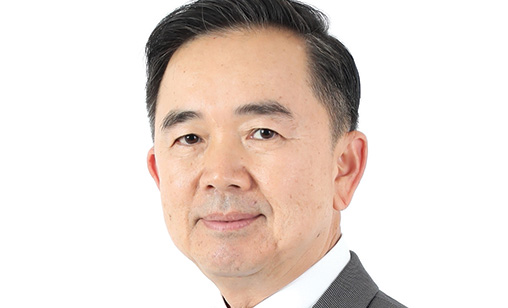News Backgrounder
THAI hauled back from financial precipice
It’s what you do to avoid bankruptcy when you are on the verge of bankruptcy. Thai Airways International (THAI) could have been the second major victim of the COVID-19 crisis in the Asia-Pacific, but it refused to raise the white flag. Associate editor and chief correspondent, Tom Ballantyne, reports.
June 1st 2020
Lawyers representing Thai Airways International (THAI) will make their first appearance before Thailand’s Bankruptcy Court on August 17 to plead the carrier’s case for rehabilitation. Read More »
If the application is approved, the high profile team charged with keeping THAI alive could take up a to a year to formulate a transformation plan of the airline, a process already attempted, without success, several times in recent decades.
 |
THAI’s legal advisor, Kitipong Urapeepatanapong, told media in a briefing at press time it could take five months to a year to draw up the turnaround plan and from five to seven years to implement it.
Focuses for reform are major debt reconstruction, sweeping cost reductions, transformation of the company’s operating structure and culture, flight network and fleet review and identification of new revenue sources.
Before the Bankruptcy Court option for THAI was announced, rumours had been circulating for months that THAI was about to go bankrupt and the speculation extended beyond Thailand.
The carrier’s acting president, Chakkrit Parapuntakul, was quick to respond. “Thai Airways will not be dissolved or go into liquidation or be declared bankrupt,” he declared.
He was right - in a manner of speaking.
Shortly afterwards, the country’s cabinet approved a reform plan being implemented “through the business reorganization chapter under the auspices of the Central Bankruptcy Court of Thailand and the Bankruptcy Act”, Chakkrit explained. Officially, it is not actually bankruptcy. Unofficially, it showed just how close THAI came to going under.
In essence, the solution is similar to regulations in the U.S., which allow a financially barren airline to enter Chapter 11, a bankruptcy clause that permits a carrier to continue operating while protecting it from creditors as it attempts recovery.
In THAI’s case, under local bankruptcy laws, it will be able to strive for its reform objectives “even more effectively step by step as required by the law”, the prime minister said.
“It will provide equitable protection to all relevant stakeholders while THAI conducts its normal business operations including passenger and cargo transportation. The business will be operated in parallel with the reform plan to increase efficiency and improve product and service quality,” THAI said.
“It was a difficult decision,” Thailand’s prime minister, Prayut Chan-o-cha, told reporters at a news briefing last month.
The plan replaced THAI’s request for a government guaranteed loan of US$1.5 billion to help it survive COVID-19.
“The government has reviewed all dimensions. We decided to petition for restructuring and not let Thai Airways go bankrupt. The airline will continue to operate,” Prayut said.
THAI was in trouble long before COVID-19 imploded the global airline industry. Majority-owned by Thailand’s Finance Ministry, it has posted losses every year since 2012, except for 2016.
Last year it lost US$377.3 million and is now carrying $3 billion in debt. Its debt-to-equity ratio rose to 21 times in 2019 from 12 in 2018 and 7.8 in 2017. Over the years, several rehabilitation plans have failed to turn around THAI’s performance. The office of the president has seen a revolving door of aspirants who fell out of favour with the government especially when they delivered news the country’s leadership did not want to hear.
Making significant capital decisions, such as fleet renewal, were hampered because clearance required the approval of several government committees that caused delays and often a readjustment of plans. Also inhibiting recovery efforts was THAI’s board of directors and management who were heavily weighted towards air force officers inexperienced in commercial airline operations.
Prayut said THAI would be protected by the courts and “a professional” would be appointed to oversee the restructuring. The airline’s 21,000 employees would keep their jobs, he added, despite overstaffing at the carrier clearly being an issue. THAI has 75 aircraft while Singapore Airlines, for example, has 136 aircraft and only 15,000 staff.
Chakkrit said: “This is an important step for THAI to change and become a stronger and more sustainable entity. THAI expressed its gratitude to all concerned in every sector of the economy, shareholders, partners, alliances, customers and in particular all THAI passengers for their continued support and confidence in the airline. THAI will resume full operations once the COVID-19 situation subsides.”
In the meantime, the Civil Aviation Authority of Thailand (CAAT) last month announced the ban on international flights into Thailand would be extended to June 30 at the earliest, with more delays possible if the crisis persisted. At present, THAI can operate some domestic flights, but internationally it is limited to repatriation flights bringing Thais home from abroad.